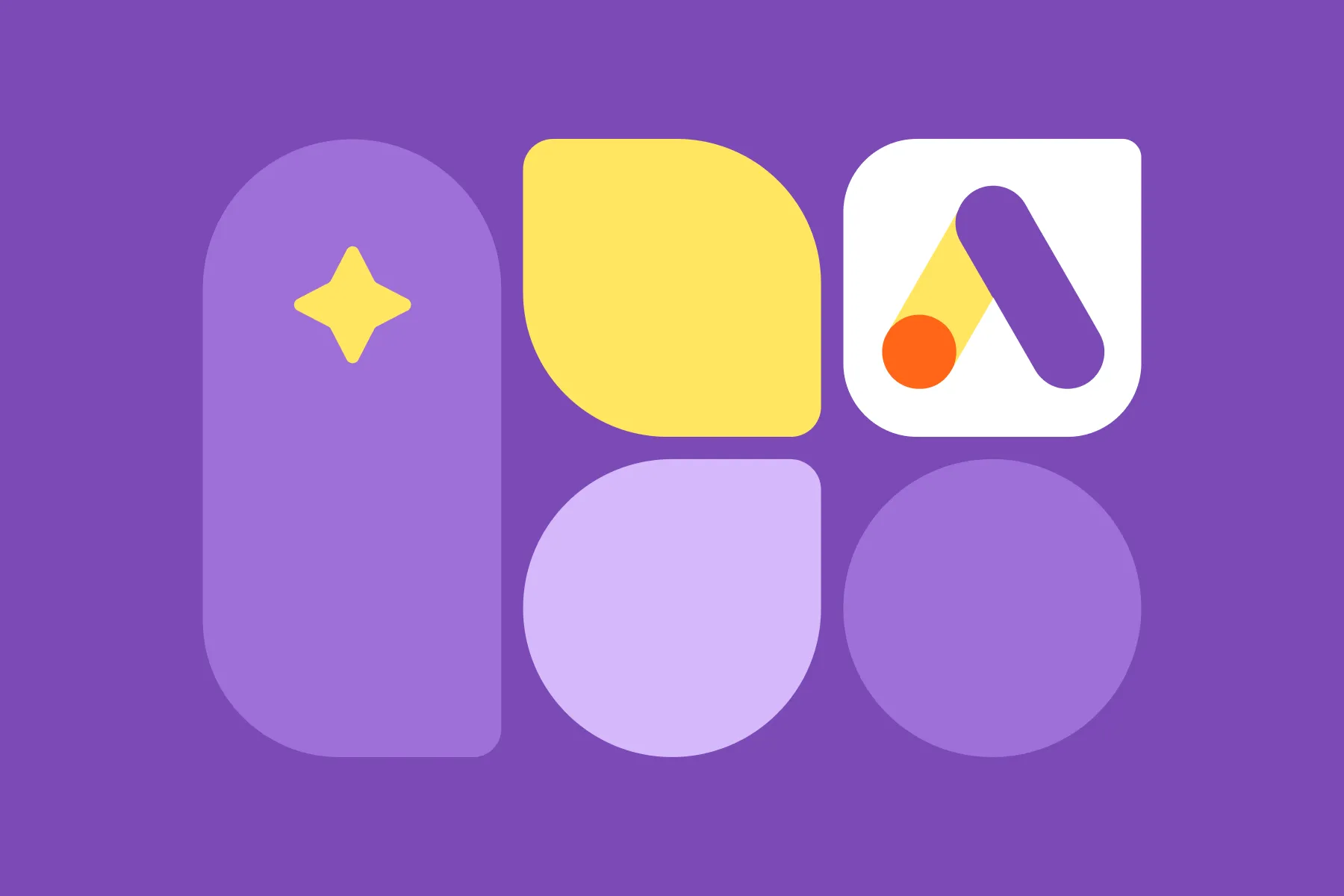How to Perfect Your Bidding Strategy for Google Advertising
Anastasiya Khvin
April 17, 2024

Choosing your bidding strategy on Google is crucial, especially in a highly competitive environment of online advertising. Google Ads works as an auction system. Of course, a bid plays an important role here, but not only the top bid. The key factors that affect ranking and cost per click include ad quality, expected impact from ad extensions, and resonance with users that influences click-through rates (CTR) and ad relevance. If you take a nuanced approach, you get cheaper ads. And if you improve your ads quality, you get a lower per-click cost and better placements.
This article will cover the different types of bidding strategies that exist on Google Ads. We will compare them, and give recommendations for each type of business. From manual to automated, you will be able to learn how to use tools such as conversion tracking, target CPA, and smart bidding strategies to increase conversions from predefined goals. Whatever the search campaign or the display networks you're targeting, or precise placement you are targeting, optimizing your bid strategy will bring dramatic changes to your advertising outcomes.
Understanding Google Bidding

Mastering Google Bidding requires a deep, nuanced knowledge of its strategies—so you can reach the campaign's goals with the budget at hand. Let's have a look at some crucial Google Ads pricing models.
1. Cost-Per-Click (CPC) Bidding:
Definition: You pay only when someone clicks on your ad.
Application: Ideal for driving website traffic.
2. Cost-Per-Thousand Viewable Impressions (vCPM) Bidding:
Definition: Pay for every 1,000 times your ad appears and is viewable.
Application: Effective for increasing brand awareness on the Display Network.
3. Cost Per Action (CPA) Bidding:
Definition: You specify the amount you’re willing to pay for a conversion, such as a sign-up or purchase.
Application: Best for campaigns focused on conversion optimization.
4. Cost-Per-View (CPV) Bidding:
Definition: Pay for video views and other interactions, such as clicks on call-to-action overlays. Recommended for video campaigns where engagement is the priority.
5. Target Impression Share Bidding:
Definition: Automatically sets bids to achieve a certain percentage of ad impressions relative to the total available.
Application: Campaigns where visibility is more critical than click-through or conversion rates.
Every bidding type meets the peculiar advertising objectives: enhancing site traffic with the CPC or rising brand visibility through the vCPM. The choice of a strategy is to be determined by the goals of the advertiser for the campaign, the behavior of the audience, and budget limitations. Moreover, keep in mind the auction system. It considers advertisement quality and relevance in such a manner that the place is not necessarily won by the highest bidder, but that the most effective and fitting advertisement is given the place. When ads' quality comes into play as a factor, it means that the position or cost of the ads is only worth bidding upon quality.
Types of Google Bidding Strategies

As you dig deeper into the fine-tuning of your Google Ads campaigns, it'd be helpful to understand its bidding strategy options and in what cases you should you them. Various strategies are suited for different combinations of types of campaigns and goals. Here's the brief outline to help you decide:
1. Automated Bidding Strategies:
- Maximize Clicks. The system will set your bids automatically in a way that it gets you as many clicks as possible.
- Maximize Conversions. Focuses on increasing conversions, using your entire budget for optimal results.
- Maximize Conversion Value. Targets high-value conversions, ensuring the most profitable outcomes.
- Target CPA (Cost per Acquisition). The cost per acquisition at which the advertiser will receive the required volume needed to meet the advertising effectiveness.
- Target ROAS (Return on Ad Spend) bid strategy. Optimizes the bids toward a desired return on ad spend by giving priority to conversion value.
2. Manual Bidding Strategies:
- Manual CPC (Cost-Per-Click). Gives you control over each bid, allowing for precise adjustments based on performance.
- Enhanced CPC (ECPC). It will increase your manual bids to bring in more conversions while mixing manual oversight with automated adjustments.
3. Specialized Bidding Strategies:
- CPM (Cost Per Thousand Impressions) & vCPM (Viewable CPM). These are the most preferred when creating brand awareness campaigns, where the cost is to be paid for one thousand views on the Display Network and YouTube.
- CPV (Cost Per View): Utilized for video campaigns, where you pay for video views and interactions.
- Target Impression Share. Helps maximize the visibility that your ads are receiving at the top of the search results or on the first page.
Selecting the right bidding strategy will depend on the type of your business.
Google Ads offers a robust collection of tools to tailor the perfect bidding strategy.
Benefits of Smart Bidding
Google Ads Smart Bidding is a very useful machine-learning bidding strategy for your advertising. It dynamically optimizes your bidding strategy to ensure reaching the maximum reach potential for your ads. Let's take a look at its benefits:
Real-Time Optimization. Smart Bidding tailors bids to every single auction through real-time signals from a varied context. Your bids are always optimized towards the best possible outcome, i.e., the most conversion or reaching your specified target ROAS.
Advanced Machine Learning-Based. With past performance analysis and more than a hundred bidding signals, the Smart Bidding algorithms constantly learn and improve. They are making more informed decisions on every bid, often exceeding even manual adjustments.
Comprehensive Signal Integration. Smart Bidding captures over 70 different signals, from location intent to remarketing lists, ad characteristics, interface language, browser, operating system, time of the day, and many more. This gives a lot of consideration to the manner in which bids are targeted and optimized very precisely over many user segments and auction environments.
Manual vs. Automated Bidding
Each manual and automated bidding strategy in Google Ads carries its sets of advantages and deployment scenarios.
Manual Bidding:
It gives you maximum control without complexity, since you manually set the maximum CPC for keywords or placements. Great for beginners, and it also definitely holds its appeal to more experienced advertisers looking to get a hassle-free setup.
Granular Management: To give you control of the bids right within ad group to product group and keyword levels, thus to be able to do customized adjustments depending on insights obtained from the performance.
Challenges: This type of bidding requires a tracking system that takes time, resources, and team's knowledge. The data insights it provides are limited, possibly preventing deeper optimization.
Automated Bidding:
Efficiency and Data Use: Automatically adjusts bids through extensive analysis of data, thus saving time and also ensuring that ad performance is optimized with the advanced algorithms.
Challenges: The biggest downside of its usage is also the heavy reliance on automated systems. You have to rely on Google's AI to make the best decisions without any human power over them.
Strategic Integration: Best used when the historical data is strong. But it is important to stay involved and adjust bids occasionally.
Both manual and automated bidding maintain a place in robust Google Ads campaigns. Manual bidding allows controlling of the process at any time. It is very helpful when baselines have to be set or when certain ad placements have to be guaranteed. Automated bidding, on the other hand, works with machine learning to make efficient bids over a large spectrum of variables. It is generally more efficient in the handling of large-scale campaigns.
Best Practices for Implementing Bidding Strategies
However, during the implementation of the bidding strategies in Google Ads, the paramount consideration must be given to the approach to harmonize both with the market dynamics and the specific campaign goals. From this perspective, the following best practices can be considered:
Seasonal Adjustments and Market Sensitivity
Change your bidding approaches in line with seasonal peaks and get opportunities for increases in traffic or conversions.
Conversion Tracking and Attribution Models
Make sure your conversion tracking mechanisms are well set to measure the achievement of your campaigns. Always audit your attribution model to ensure that it aligns well with the set advertising goals. Do it to assure that you give credit for the conversions in the right manner.
Testing and Optimization
Test the various bidding strategies through this feature of Draft & Experiments from Google. So you'll be able to compare results and choose the most useful one. Wait until reaching the 95% confidence level after you have collected enough data. Then, make larger bid adjustments to make data-driven decisions.
Strategic Alignment and Structure
Clearly define your campaign goals, considering the balance between desired conversion volume and cost-effectiveness. Simplify your account structure to facilitate modifications to bidding strategies as needed. Create distinct bidding strategies for each campaign to address specific objectives and audience behaviors.
Ongoing Management and Adjustments
Regularly review ad performance for areas of change and optimize bids based on actual campaign data and performance metrics. PPC is a long-term strategy, requiring continuous testing and refinement to achieve optimal results.
The above are some of the practices that can fine-tune your bidding strategies to better align with your business objectives.
FAQs
1. What is the most effective bidding strategy for beginners using Google Ads?
The best one of those we've mentioned is the CPC manual bidding strategy. It is recommended mainly for new Google Ads users, new advertisers, new accounts, or new campaigns. It helps mainly to monitor the performance very closely.
2. How can I improve my bid management in Google Ads?
To realize the full potential of your bid, adjust incrementally and observe the effect on your keyword clicks and conversions. Always bear in mind that since internet traffic changes, your bids need to be re-evaluated from time to time. Increasing your Quality Score would help enhance the position of your ad without any extra cost.
3. What are the primary Smart Bidding strategies available in Google Ads?
Google Ads provides Principal Smart Bidding Strategies with four major approaches: Target Cost Per Acquisition (CPA), Target Return On Ad Spend (ROAS), Maximum Conversions, and Maximum Conversion Value. These strategies use the most up-to-date machine learning to focus on giving you the best possible bidding optimization according to the targets you set.
4. How should I determine my bid amount on Google Ads?
While deciding your bid, think of the maximum amount you would like to pay for a click on your ad (max CPC bid). Consider the value of a click to your business and set an appropriate bid amount. If uncertain, starting with a maximum CPC bid of $1 is a practical approach.
In this comprehensive overview of Google Ads bidding strategies, we have outlined the ways how you can optimize your campaigns to get the best efficiency and performance our of your budget. From understanding in-depth nuances of CPC, CPM, CPA, and CPV, to strategies of manual and automated bidding, the insights here have covered all points to empower you with knowledge and help you to fine-tune your advertisement efforts. It's done to sensitize the importance of how to match a bidding approach with the goals of your campaign and show how the varied strategies suit different business needs.
The road to becoming a master at Google Ads bidding is a continuous process of learning, testing, and optimization. If you want to start using Google Ads or want to make improvements in your current campaigns, contact us and let's discuss how we can get your business to the next level.










.png)

.png)